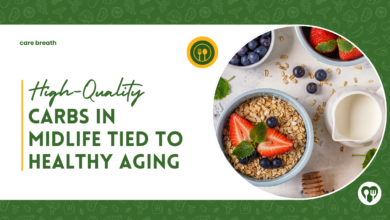Smoked Salmon and Hot Smoked Salmon

Introduction
Smoked salmon is a beloved delicacy around the world, known for its rich, smoky flavor and versatility in various dishes. But when you shop for smoked salmon, you might notice two main varieties: cold smoked salmon and hot smoked salmon. While they may look similar, these two types of smoked salmon differ in flavor, texture, preparation, and even nutritional content. This article breaks down the differences between them so you can make the best choice for your next meal.
Overview of cold smoked salmon and hot smoked salmon
Cold-smoked and hot-smoked salmon are both popular, yet distinct, methods of preparing salmon. Here’s an overview of the differences, flavors, textures, and typical uses of each:
1. Cold-Smoked Salmon
- Smoking Process: Cold-smoked salmon is cured (salted or brined) and then smoked at a low temperature, typically below 85°F (29°C), which doesn’t cook the fish. This process can take from several hours to a couple of days.
- Texture: Due to the low smoking temperature, the texture of cold-smoked salmon is smooth, silky, and firm, similar to raw salmon. It’s often sliced very thinly.
- Flavor: Cold smoking gives the salmon a subtle, smoky flavor that enhances its natural taste without overpowering it.
- Uses: Cold-smoked salmon is usually served chilled and used in dishes like bagels with cream cheese, salads, and appetizers. It’s also enjoyed on crackers, in sushi, or as a garnish.
Hot-Smoked Salmon
- Smoking Process: Hot-smoked salmon is cured and then smoked at higher temperatures, typically between 120–180°F (49–82°C), which cooks the fish fully. This process is faster than cold smoking and may only take a few hours.
- Texture: Because it’s cooked, hot-smoked salmon has a flaky, firm texture, similar to baked or grilled salmon.
- Flavor: The higher temperatures infuse a stronger, more pronounced smoky flavor, which tends to be richer and bolder than cold-smoked salmon.
- Uses: Hot-smoked salmon is versatile in both hot and cold dishes. It’s great on salads, in pasta dishes, or served as a main course with sides. It can also be flaked and used in dips, quiches, and soups.
What is Smoked Salmon?
Smoked salmon has been enjoyed for centuries, initially as a way to preserve fish before refrigeration was possible. The smoking process not only preserves the fish but also infuses it with unique flavors, making it a gourmet favorite worldwide. Rich in nutrients like protein, omega-3 fatty acids, and vitamins, smoked salmon is not only tasty but also packed with health benefits.
Cold Smoked Salmon
Cold smoked salmon is smoked at a low temperature, typically below 90°F (32°C). This method keeps the fish raw while infusing it with a smoky flavor. Cold smoking is a delicate process that requires precision and patience, resulting in a silky, buttery texture. Often served as thin slices, cold smoked salmon is perfect for dishes that showcase its smooth texture, like bagels with cream cheese or sushi rolls.
Hot Smoked Salmon
In contrast, hot smoked salmon is smoked at a much higher temperature, generally between 120°F and 180°F (49°C – 82°C). This process cooks the fish while it’s being smoked, giving it a firmer, flaky texture. Hot smoked salmon has a more intense, robust flavor compared to cold smoked salmon and is often served in chunks rather than slices. It’s ideal for heartier dishes like pastas, salads, and sandwiches.

Cold Smoked vs. Hot Smoked Salmon: Key Differences
One of the primary differences between cold and hot smoked salmon lies in the temperature at which they are smoked. Cold smoked salmon is prepared at a lower temperature, which preserves its raw texture, while hot smoked salmon is fully cooked, resulting in a different flavor and consistency.
Nutritional Comparison
Both types of smoked salmon are packed with protein, omega-3 fatty acids, and essential vitamins. However, they may have slight differences in nutrient composition due to their smoking methods and preparation.
- Protein Content: Both are rich in protein, supporting muscle health and energy.
- Omega-3 Fatty Acids: Smoked salmon is an excellent source of omega-3s, which are beneficial for heart and brain health.
- Vitamins and Minerals: Smoked salmon provides essential nutrients like B vitamins, selenium, and magnesium.

Flavor Profile Comparison
The flavor of cold smoked salmon is often described as light and mildly smoky, with a hint of saltiness. Its delicate flavor makes it ideal for raw applications where subtlety is key. Hot smoked salmon, on the other hand, has a much bolder taste. The higher smoking temperature brings out deeper, smokier flavors, adding a robust, savory quality to dishes.
Texture Differences
The texture difference is a key factor in choosing between cold and hot smoked salmon. Cold smoked salmon is silky and almost melts in your mouth, making it perfect for delicate dishes. In contrast, hot smoked salmon has a firm, flaky texture, similar to grilled fish, which works well in cooked dishes like pastas and salads.

Health Considerations
While both types of smoked salmon are nutritious, they do contain varying levels of salt, which helps preserve them. Cold smoked salmon, in particular, may carry a slight risk of bacterial contamination since it’s not fully cooked, making it essential to buy from a reputable source.
Popular Dishes Using Cold Smoked Salmon
- Bagels and Lox: A classic pairing with cream cheese, capers, and onions.
- Sushi and Sashimi: Adds a smoky touch to traditional sushi rolls.
- Salads and Appetizers: Complements light salads and charcuterie boards.
Popular Dishes Using Hot Smoked Salmon
- Pasta and Risotto: Adds depth to creamy pasta sauces and risottos.
- Quiches and Frittatas: Ideal for adding a smoky flavor to egg dishes.
- Sandwiches and Wraps: Perfect for a hearty sandwich or wrap with greens and spreads.
Cold Smoked Salmon vs. Hot Smoked Salmon: Which to Choose?
Choosing between cold and hot smoked salmon largely depends on personal preference and the dish you plan to make. Cold smoked salmon is excellent for light, fresh recipes, while hot smoked salmon works well in heartier, cooked dishes.
Sourcing Quality Smoked Salmon
When purchasing smoked salmon, look for fresh, vibrant color and an appealing aroma. High-quality smoked salmon should not be overly salty or oily. Additionally, check the packaging for sourcing information, especially if you prefer wild-caught salmon.
Storage and Shelf Life
Both types of smoked salmon should be kept refrigerated. Cold smoked salmon generally has a shorter shelf life and should be eaten within a few days of opening. Hot smoked salmon lasts longer, often up to a week when stored properly.

Conclusion
Whether you prefer the delicate flavor of cold smoked salmon or the robust taste of hot smoked salmon, both are delicious additions to a variety of meals. Cold smoked salmon is perfect for light dishes, while hot smoked salmon shines in heartier recipes. No matter which you choose, you’re sure to enjoy the rich flavors and health benefits that smoked salmon brings to the table.
FAQs
- Can I use hot smoked salmon in sushi?
- Hot smoked salmon is cooked, so while it’s not traditional in sushi, it can be used for a unique twist.
- Is smoked salmon safe to eat without cooking?
- Yes, both cold and hot smoked salmon are safe to eat as is, but cold smoked salmon should be sourced from reputable suppliers to minimize any health risks.
- How long does smoked salmon last in the fridge?
- Cold smoked salmon lasts about 5 days after opening, while hot smoked salmon can last up to a week.
- Which type of smoked salmon is healthier?
- Both types are nutritious, but hot smoked salmon may have slightly lower salt content.
- Can I freeze smoked salmon?
- Yes, smoked salmon can be frozen to extend its shelf life, but the texture may change slightly after thawing.




